On the day I was born, if I had needed invasive medical treatments, even something as major as thoracic or abdominal surgery, I wouldn’t have had pain relief.
Please don’t think this is some sort of ‘I was a really macho newborn!’ nonsense. On the day I was born, no newborns in the UK were given pain relief during surgery.
We weren’t even given a proper anaesthetic.
The standard procedure for surgery on newborn babies in the UK at the time was to give them a drug to paralyse them and nitrous oxide, or laughing gas. In the US, many infants didn’t even get the nitrous. Throughout the sixties, seventies, and most of the eighties, hundreds of thousands, maybe millions, of babies underwent hours of surgery wide awake and with nothing to numb them at all. They felt every second of it.
Why?
Because doctors at the time believed that newborn babies couldn’t feel pain.
Then, in 1985, a little boy called Jeffrey Lawson was born. A few weeks after his birth, he underwent open heart surgery. Five weeks later, tragically, he died. His mother Jill learned that during his operation, he had received no pain relief, and no anaesthetic. She founded and fuelled a public awareness campaign and, in 1987, the American Academy of Pediatrics declared it unethical to operate on newborns without anaesthetics because they feel pain.
Because of course they do.
The real question is ‘How could a whole profession of at-least-moderately-intelligent people not see that?’ At least some of the answer is cultural.
What is pain?
Pain is defined as an “unpleasant sensory and emotional experience associated with actual or potential tissue damage, or described in terms of such damage.”
Pain is also a protective response.
it tells the body that damage has happened or is likely
it changes our behaviour to facilitate healing
it motivates the brain to learn methods to avoid it in the future
That’s why virtually every animal feels pain. As a veterinary surgeon, the debate over whether or not an animal feels pain seems bizarre. It almost certainly does. Pain is an evolutionarily conserved experience because it’s vital for survival.
And, even if we vets can’t prove an animal feels pain, we assume that it does. We’re taught that pain is conserved across species, but that the more complex a mind is, the better it’s able to control its perception of pain. Humans probably best of all. If you know what’s causing your pain, and you know that it will end, it makes it easier to cope with. You can remember time without pain, and you’ve learnt to distract yourself in times of agony.
But somehow, in our WEIRD (Western, Educated, Industrialised, Rich, and Democratic) culture, we forgot that babies, who can’t yet do any of the human tricks to control pain, feel it most strongly. Our culture can be roughly defined by the fact that we like new wisdom more than old wisdom. I’ve written before about how we threw out our traditional child-rearing behaviours over the past 300 years. That same love and trust of new information pushed Western medicine to accept a few (deeply flawed) scientific papers instead of the wisdom of our parents and our own fundamental instincts to soothe and protect babies.
It’s interesting to notice, if you look closely, that our culture is *still* affecting how we deal with pain in childhood and set adults up to deal with pain throughout their lives.
Our beliefs and experience about pain are formed in childhood
In the definition above, you’ll notice that pain is the brain’s response to actual or perceived body injury. A person’s culture, belief system, and emotional response strongly affect their response to pain. That fundamental belief about pain, and therefore how they experience pain, is shaped by how children see others around them responding to pain.
A child’s experience of a pain is shaped by:
How healthy their body is - Along with a few rare genetic conditions, pain receptors are sensitised by chronic inflammation. This means that poor diet, lack of movement, bad sleep, and many other drivers of inflammation, all encourage more pain signals to be sent to the brain.
How much pain they have previously experienced - Children who remember previously coping with pain are able to cope with pain. But there is a golden zone - both too much pain and too little pain can worsen a child’s experience of pain.
How much they pay attention to the pain - The ‘Gate Control’ theory of pain suggests that nerves in the spine act as a ‘gate’ on pain to increase or reduce a pain signal. The gate is ‘opened’ by strong pain, stress, focusing on the pain, and not moving, and ‘closed’ by other distracting sensations and relaxation. This is also affected by how others respond to the pain. Fear increases the threat of pain, ‘opening’ the gates, so a scared child feels more pain. The fear that a child feels is, again, shaped by how the people around them respond.
How much they feel they can control the pain - We know that a child who feels powerless can be overwhelmed by pain. We can extend that to understand that a child who feels that they know what to do when faced with pain will be much better able to control their own pain. How do you learn what to do when faced with pain? Once again, this comes down to watching others.
Everyday pains provide opportunities for children to learn about pain and pain behaviour
Even if we exclude the psychological, children can experience many types of pain:
Everyday pains, such as those from grazes, bruises, and small wounds.
Procedural pains, such as that from injections
Significant injury pain, such as that from broken bones
Chronic pain, such as that from juvenile arthritis
All of these pains are influenced by, as we said above:
How healthy the child’s body is
How scared or stressed a child feels
How much the child pays attention to the pain
How much they feel they can control the pain
And, since I missed my usual slot at the beginning of the article, the best way I can think of to illustrate this is with a true story. This time, in the Amazon rainforest:
The difference between hot, humid, still air and hot, humid, moving air is the difference between intolerably stifling and merely horrendous. Sweat doesn’t evaporate, you end up soaking wet but still clawing your hair out with the heat. It’s oppressive. It’s scary.
Unfortunately, there’s rarely much of a breeze when you have hundreds of kilometres of dense rainforest in all directions. I was blessing whichever bright spark worked out that if you swing your hammock gently, it moves you through the air just enough to prevent you from becoming so much boil-in-the-bag meat.
My four-year-old son was sitting between my legs as I swung, slowly, back and forward. He was sweating too. Not entirely because of the heat. We were each examining a cluster of swellings on his foot and my own. The lumps were painful and growing quickly.
An Amerindian friend sauntered over for a chat and I asked him if he knew what they were. He smiled and wrinkled his nose. “Chiggers.”
For those who have never had the displeasure of meeting a chigoe flea (or ‘chigger’ as it’s known in some parts of the Amazon - not to be confused with Harvest mites, which also get called ‘chiggers’ but this time by people in the southern United States), let me explain. Chigoe fleas are both the smallest and largest fleas in the world, depending on whether they have fed. At 0.2mm long, the tiny adult animals burrow under the skin of the feet, stopping short of penetrating your tissue and making you bleed, but still feeding on your juices. They grow rapidly, and start laying eggs out of the hole they dug in your foot.
Gruesome. But perhaps not as gruesome as dealing with them.
“You have to cut them out,” said my friend.
My son’s eyes widened. I hooked my knife off my belt and started sharpening it. Not for the first time in the jungle, I blessed my veterinary training. Cutting down in a cross pattern over the largest of my lumps, I saw the white, glisteny, pea-sized object emerge. I looked at it, it was clearly a grossly distended flea. I squashed it between my nails. Now for my son.
Fascinated though he was, and uncomfortable though his foot was, he was also terrified by the idea of cutting his skin. We discussed the problem. Various solutions were offered by each party. Eventually, we settled on a strategy that he’d suggested:
I picked up my knife. He looked the other way, kept his foot still, and screamed.
A week later, having watched the other kids in the village dealing with their pain, he’d learned a lot. No longer did he need help. He much preferred to cut out his own chigoe fleas.
In many traditional cultures, everyday pains provide important opportunities for children to learn about pain and pain behaviour. They occur frequently, so the child can develop and reinforce their skills. And they enable children to learn not only from the pain but also from the subsequent interactions with the adults and children around them.
Learning how to manage and control your own pain is vital throughout life. Many pains that people suffer from, despite modern medicine, can’t be fully alleviated. Strong coping strategies and belief in your own ability to manage pain mean that you are much better able to manage pain and still enjoy life.
Some traditional cultures know about setting up children who are resilient to pain
There is enormous variability between how people in different cultures feel pain. In some cultures, the ability to tolerate pain is prized. In one study of Bororo indigenous people in the Amazon rainforest, women believed that they were better able to tolerate pain than non-indigenous women. No woman in the study made any reference to childbirth pain, because in Bororo culture, childbirth is a time when a woman reaffirms her strength. However, in other cultures, social demonstrations of pain and vulnerability are encouraged.
Traditional cultures have different belief systems and values that alter how people feel pain. Some cultures have genetic factors that alter pain sensitivity and perception, but genetic factors can be modified by dietary habits, lifestyle choices, and traditional healing modalities. In general, though, where treatment and alleviation of pain is harder, cultural values and beliefs set children up for better ability to deal with pain.
The Qichua people in the Andes, who have virtually no access to Western medical services, believe that pain is predominantly caused by negative life events, such as the loss of loved ones, the lack of maintaining good relationships with neighbours, or financial strains. This means that they rely on help from family members or traditional healers, and need to be able to endure pain. In one study, 87% of people said that they could endure any kind of pain.
WEIRD cultures have forgotten how to help children learn resilience to pain
Most of us WEIRDos don’t have this belief. In fact, almost a third of us in the US, UK, and America experience physical pain that we’re not set up to cope with ‘often’ or ‘very often’, according to a 2011 survey reported in an essay called “Unhappiness and Pain in Modern America.”
The cultural variability is so vast that I’m going to share the graph from an Atlantic article that lays it out.

What factors are contributing to the variability?
Metabolic syndrome and obesity - higher levels of inflammation make pain more severe
Poor mental health - stress, anxiety, and depression reduce the ability to cope with pain
Reduced risk of childhood injury - our cushioned lives and risk aversion have taken away many learning opportunities for children. Children may encounter pain much less frequently than in other generations. (Great article on this below)
High reliance on pain-relieving drugs
Let’s revisit that last point for a moment.
We have an amazing ability, in WEIRD societies, to take away a child’s everyday pains. Quite aside from wrapping all available edges with cotton wool, we’ve invented the most fantastical pharmacopoeia of pain-killing products. We’ve got gels, syrups, chewable tablets, gummies, etc. and we’re happy to medicate almost every pain that a child experiences.
Many parents frequently use over-the-counter pain relief medications for children. Part of that is because there’s been a rebound effect from the no-anesthetic atrocities of a few decades ago, meaning that pain management is rightly much higher on the agenda for doctors. Part of it is because these medications are affordable, easy to administer, and convenient.
But frequently using pain relief for everyday pain has long-term effects.
First, there are likely long-term effects of early use of pain-relieving drugs - this is true for many drugs. And the earlier the exposure, the greater the effects. A recent systematic review found multiple studies linking prenatal paracetamol/acetaminophen (for my UK/US readers) use with problems with neurodevelopment, allergy, and reproductive outcomes. Early childhood paracetamol/acetaminophen exposure is linked with allergy and asthma development, though the evidence is not particularly strong.
Second, possibly more insidious, is that managing everyday pain with pharmacological methods bypasses vital learning opportunities for children. What do children learn when we routinely medicate their pain? They learn that the way to treat pain is to take a drug. They learn that showing pain behaviours is rewarded with a sweet treat. And they don’t learn all the skills that they have to develop ways to take control of their own pain.
And how will these beliefs serve them in adulthood? Maybe they will feel that pain can only be treated by a drug or a doctor. That pain should always be taken away immediately. But drugs and doctors aren’t fail-safe solution. How will they feel when the drug or the doctor can’t take away their pain? How empowered do they feel? Will they think they are able to endure any pain?
As an aside, we’re quick, in our culture, to reach for pain relief to deal with physiological pains. These are the pains that come as a normal part of life. In teething, in "normal” menstrual pain (NB not all menstrual pain is “normal”), and in normal childbirth (NB this is exceedingly rare in WEIRD cultures). But we’re increasingly realising that taking away the pain of those experiences can have consequences that we hadn’t foreseen. Epidurals that remove the pain of labor increase the length of labour, the likelihood of needing assistance, and the likelihood the mother will be given antibiotics. Childbirth is obviously a very different situation, as cultural and medical practises don’t support physiological childbirth. But it’s not unlikely that treating ‘expected’ pains may have consequences that we don’t predict.
When we avoid these pain-relieving medications for mild physiological pain, they’ll have much more effect when we really need them. And this is vital. We want children to learn from everyday pains but we must protect them from severe pain. Children who experience too much pain, just like those who don’t experience enough, find it harder to cope with painful experiences throughout life.
How can we help WEIRD children grow up with strong resilience to pain?
I started this article with a question. “Should we always treat pain in children?”
This question hinges on the use of the word “treat.”
According to the Oxford English dictionary, ‘treat’ has several meanings
To behave towards or deal with in a certain way
To give medical care or attention to; try to heal or cure
We should respond to pain and help children when they suffer. This is a vital part of our humanity.
But there are so many ways to help children with pain. We need to use a toolkit of behavioural approaches, not just a single spoonful of medical solution.
So what can we do to influence a child’s experience of pain?
We can help them by
Setting up their bodies for better health
Allowing them to risk everyday pains
Helping them to avoid focusing on pain
Giving them skills to control pain.
And, when needed, doing things to relieve pain
How to set up children’s bodies to feel less pain
This is the sort of stuff I talk about all the time. Healthy diet, very little sugar, plenty of movement, plenty of time outside. All of these help to reduce the child’s pain sensitivity.
How to allow them to risk everyday pains
What are ‘everyday’ pains? Grazes. Splinters. Cuts. Mild burns. Where do they come from? Playing outside. Going barefoot. Climbing trees. Using knives. Playing with fire.
These are the elements of risky play - play activities that contain an element of risk for children. Risk of what? Risk of physical injury and risk of pain. Risky play allows children to learn about risk, manage fear, and build confidence. And it helps them to calibrate their experience of pain.
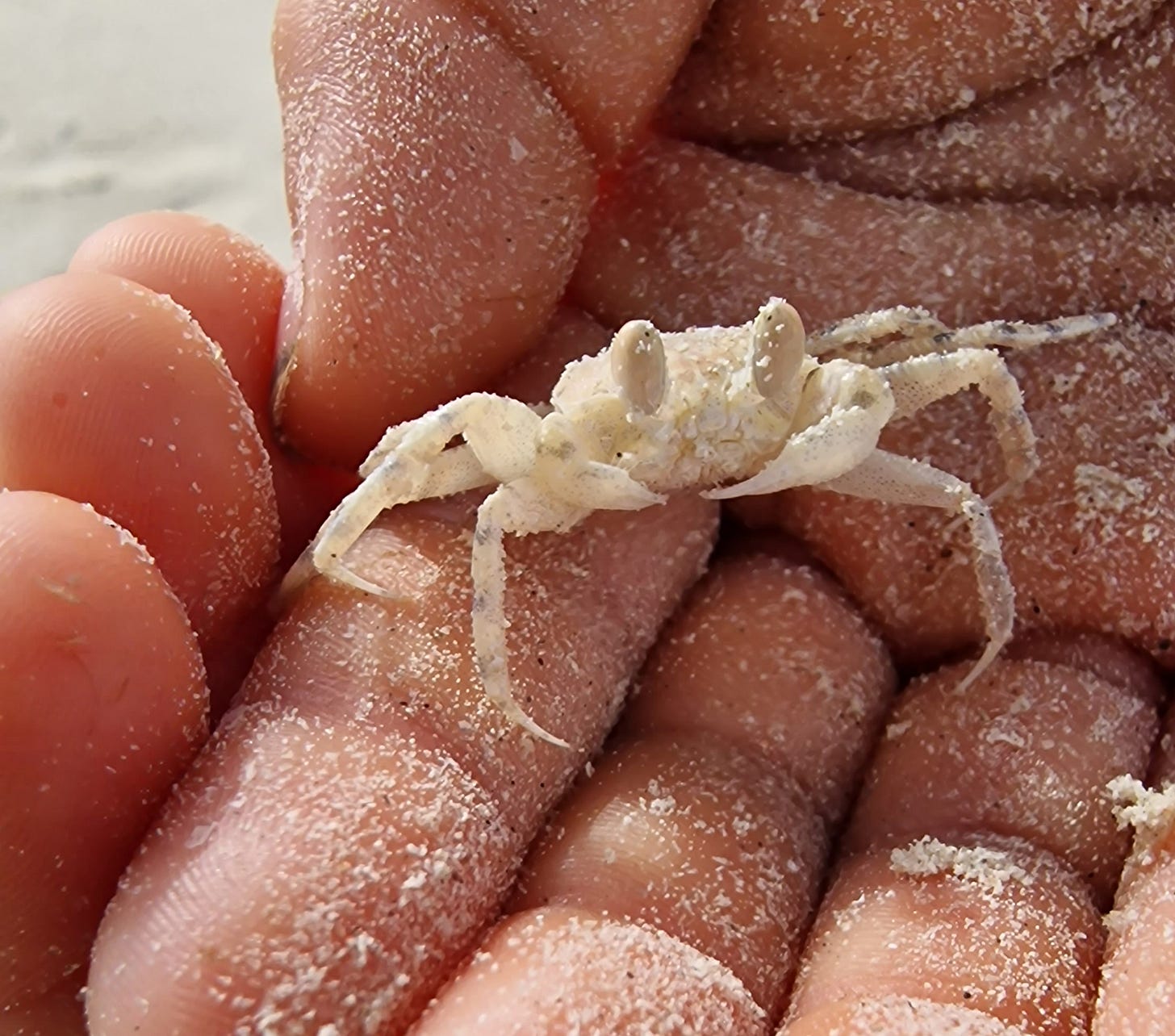
How to relieve pain
Breastfeeding. Breastfeeding is an incredible analgesic. It reduces fear and stress and releases endorphins, the body’s natural pain-relieving drugs. It’s one reason of many that every mother should be supported to breastfeed, even if she barely produces milk. Breastfeeding provides a very easy way to relieve her baby’s pain. The WHO suggests that babies should be breastfed for at least the first two years of life, and longer if possible. Most things in a young child’s life can be improved by a feed.
Cuddling. If you can’t breastfeed them, touch them in a comforting way. Stroking, holding, rocking, caressing, cuddling and massaging.
Sleep - Sleep is when bodies heal. If you can soothe a child enough to get them to sleep, the pain is likely to be less when they wake.
Heat or cold or vibration (gentle tapping) can relieve pain
Use placebos - every parent knows the value of a well-timed plaster or Band-Aid. You can also encourage children to find their own - mine like to test the effect of rubbing different plants on stings, for example.
How to help children avoid focusing on the pain
This is about:
Reducing their fear and stress - this reduces the threat of pain
If pain is predicted, talk through what’s going to happen, and give them some control over the procedure. “We need to clean that graze so bad bacteria can’t get in. Do you want to wash it or do you want me to?”
If pain is unpredicted, allow the child to react before responding to an injury. Don’t impose your own expectations on their experience of pain. For most small falls, try looking the other way, so when your child looks at you, they have to decide if it’s worth getting your attention. If they are actually hurt, they’ll let you know.
Where pain is just part of the experience, focus on the other elements. For example, for a small fall, hearing “that looked frustrating” rather than “that looked painful” can help a child focus on other aspects of the emotional experience.
Providing distractions
Screen time is an incredible analgesic. But only if it’s usually restricted. You want to save this amazing pain relief option for when you really need it. (This also works if you need a child to stay still for a haircut, nail clip, or full-on cleanup).
Other options for distraction involve stories, music, blowing bubbles, and reading books.
Laughter truly is the best medicine - playing or being silly helps children to relax and forget their worries.
How to give children skills to control the pain
Model the attitudes and behaviours you want them to copy.
Lack of concern. This helps children to understand that there is no danger, reducing their own fear.
Confidence that the pain will go away. If you hurt yourself, use phrases like “my body will fix it” - this is a very simple message for a child to remember in the moment.
Acceptance rather than complaint. The more you focus on your own pain and call attention to it, the more your children will do the same to theirs.
Teach children how to manage their own pain
Learn from observing others in pain: children should learn that they can help others with kind words and physical assistance (offering a wet paper towel for a graze)
Help them develop the skills of attending to wounds and injuries themselves - washing a wound, putting on a plaster, changing a dressing.
Respond appropriately to their pain
Acknowledge pain: “Looks like that hurt”
Don’t reward pain - rewarding or giving gifts when a child is ill or in pain seems to increase their risk of chronic pain in adulthood.
Don’t talk about feelings too much. Saying “I know you’re worried/scared…” or “You’re in so much pain” may lessen the child’s coping ability.
No one wants to see their child in pain. But pain is a normal part of life, and painful experiences are learning opportunities.
Focusing on relieving short-term pain can actually increase a child’s pain in the long term.
Let’s set our children up for bodies that are less likely to be in pain and for brains that are better able to cope with it.
Want to hear my partner and I discuss our experiences of managing pain in children? We have a podcast where we use the topic from the previous post and give context and examples to help bring it to life. There’s also a weekly news section where we dive into interesting research into child development from the previous week.
This is the sound of Sunday evenings in our house!
You might also like:
Notes
Fantastic longer article here, lots of very useful information on how to assess pain in babies and children: McGrath, Patrick J., et al. Pain, pain go away: helping children with pain. Melbourne: Royal Children's Hospital, 2003.
Early life pain has significant long-term effects on neurosensory, cognition, behavior, pain processing, and health outcomes that persist into childhood and even adulthood: https://pmc.ncbi.nlm.nih.gov/articles/PMC7020755/
Communicating with young children to promote resilience and recovery after pain experiences: https://pmc.ncbi.nlm.nih.gov/articles/PMC9545644/
Cultural variability in pain perception: https://pdfs.semanticscholar.org/1726/80223760b136dbc8f4ef89a810c94d7358f3.pdf
Pain in Quichua communities: https://www.rrh.org.au/journal/article/1379/
Unhappiness and pain in Modern America: https://pubs.aeaweb.org/doi/pdfplus/10.1257/jel.20171492
Atlantic article on pain in America: https://www.theatlantic.com/health/archive/2017/12/america-experiences-more-pain-than-other-countries/548822/
Metabolic syndrome and pain: https://onlinelibrary.wiley.com/doi/abs/10.1002/pmrj.13361
Prenatal and neonatal exposure to acetaminophen: https://www.mdpi.com/1660-4601/19/4/2128
Early paracetamol exposure and risk of allergy: https://karger.com/iaa/article-abstract/181/6/422/168375/Cumulative-Evidence-for-Association-of
Paracetamol was never shown to be safe for neurodevelopment: https://pmc.ncbi.nlm.nih.gov/articles/PMC9056471/
Effects of epidurals on birth outcomes: https://www.sciencedirect.com/science/article/abs/pii/S1871519220303188
Picky eating and pain: All of these help to reduce the child’s pain sensitivity.

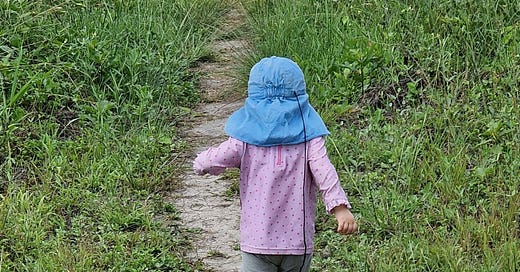





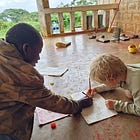
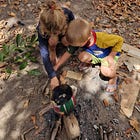
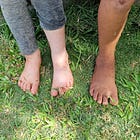
What a coincidence I read this today, the day my 6yo son got his tonsils out! I was really surprised that the nurse in surgical recovery gave him the standard 1-10 pain scale and also surprised when he confidently said his pain was at a 5 when he was still super groggy from anesthesia. He’d never heard that kind of idea before, as far as I know. Not that I didn’t believe him, but I didn’t know they used that scale with children at all.
He’s been doing pretty well with pain so far, but we’ve been instructed to alternate acetaminophen and ibuprofen around the clock for as long as he needs it to make sure pain stays controlled. I very rarely give these meds to my kids and I’m curious to see how long he will feel like he needs them.
This is absolutely fascinating, Guen. I have experienced chronic pain in adulthood and I found learning about the psychology of pain was crucial in managing it. I wish I had known that stuff when the pain initially started (as I think it would have prevented it from getting so bad).
It's even more interesting to consider how we could prevent it in the first place and these are some really useful, actionable points!